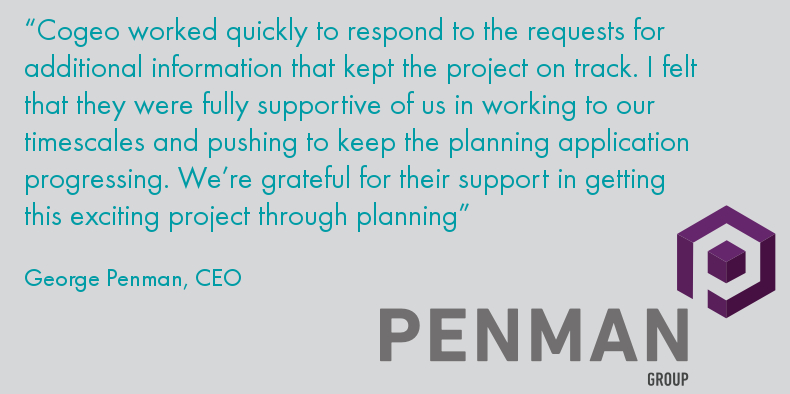CALL US: 0141 212 1322

Penman Group: Meadowbank Residential Development
Project Overview
Flooding has become an increasingly important issue in recent years. With the drive to build more houses on more marginal land and climate change bringing about more extreme weather, planning authorities have been increasing the requirement of developers to provide detailed flood risk and drainage information.
As a provider of high-end and luxury residences throughout the east of Scotland, it was the Penman Group and their development at Meadowbank Gardens on the southern edge of Wellbank, Angus that required the environmental expertise of Cogeo. The proposal for four detached executive homes was submitted to planning by Lead Architect Scott Dalrymple in May 2017. Following feedback from consultees and stakeholders, concerns were raised regarding the flood risk from the nearby Buddon Burn and the potential impact of proposed tree removal on local ecology.

-
Approach & Solutions
Working alongside Dalrymple Design Architects Practice, our role was twofold: to analyse the flood risk and provide a mitigation scheme for the site and to assess the site as a potential habitat for bats.
With our appointment to the project coming in July, our Ecology team needed to act quickly. The survey window for bats for foraging and commuting closes in September, which can cause significant delays in the projects if further surveys cannot be carried out in time.
Following the bat conservation trust guidance, our team undertook a survey of the site to identify any trees that had the characteristics that could encourage bats to take up residence. Luckily the preliminary bat roost assessment didn’t identify any trees with potential and further surveys were not recommended. This allowed us to concentrate on the flood risk to the site.
Over the coming months we worked closely with Kaya Consulting, who provided detailed hydrological modelling, to provide a full and robust assessment. A combination of onsite and desk-based analysis, a flood risk assessment, hydrological modelling and drainage impact assessment were all conducted on the site. Utilising attenuation tanks and design strategy, any impact of introducing non-permeable surfaces was mitigated by the drainage design. The hydrological modelling and flood risk assessment concluded that the new houses could be appropriately designed to avoid even the worst-case scenario of a 1 in 200-year flood event.Outcome
The planning application was approved by the Angus Planning Committee on the 8th of January 2018 with construction of the £1.2m project due to begin in spring of this year.
